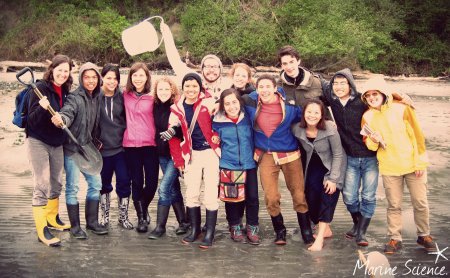Although this is a bit of cheat since he wasn’t in Marine Science (only because there was no ‘Marine Science’ in his time at Pearson College), Damien Guihen (PC 27, Ireland) was a student of Biology and Physics, and Diving, and Race Rocks.

He is a marine scientist to his core though!!
After leaving Pearson College Damien completed a PhD in Physical Oceanography at the National University of Ireland, Galway. He investigated abiotic factors including flow dynamics at a cold-water coral reef ecosystem off the coast of Norway.
Following his PhD, he accepted a postdoctoral position at the British Antarctic Survey (BAS) where he is currently part of the GENTOO Project. While Gentoo penguins are residents of the Antarctic, the GENTOO Project, which stands for ‘Gliders: Excellent New Tools for Observing the Ocean’, is exploring the possibility of using underwater robots to monitor living resources of the Antarctic, including krill, which is where Damien comes in…

Second year Marine Science students were very fortunate to have Damien speak to them via Skype on Monday 18 March (A block) and on Tuesday 19 March (F block).

Damien explained to us how he uses the glider pictured above (and below) to map krill populations in the Antarctic using sound signals.



Damien also explained how the gliders are controlled and how their buoyancy is regulated using the diagram above. Very, very cool technology!
Many thanks to Damien Guihen for sharing his knowledge about the Antarctic, gliders & krill and more generally for his wonderfully warm enthusiasm!
P.S. If you look very carefully in the Skyped images of Damien you will see one of his colleagues just behind his shoulder – one of his chinstrap colleagues!
P.P.S. For more details on his work (from Damien himself) see his guest post on the Seabed Habitats blog.
























































